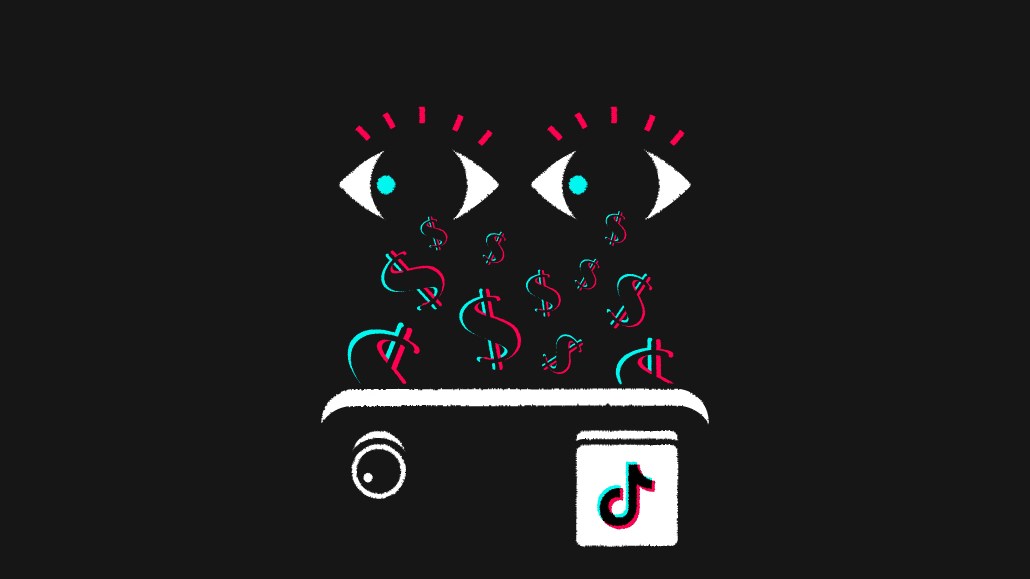Why Hollister is taking a long-term partnership approach to its influencer marketing on TikTok

Hollister is shifting to extended partnerships over a one-off, pay-per-post model with TikTok creators to build trust with its core demographic, high schoolers.
“Our demographic puts a lot of trust in peer suggestions,” said Jacee Scoular, senior brand strategy director at Hollister, of the long-term partnership strategy. “We really started thinking about it and said the best way to leverage creators and build trust with their audience is to build trust with the creator.”
For example, Hollister kicked off its first class of the Hollister Collective, a long-term program with a group of more than a dozen up-and-coming Gen-Z TikTok creators, last June. Those in the collective, which wrapped up its first class at the end of February, posted regular content to support marketing efforts, lead Instagram live shopping and story takeovers on the Hollister account as well as wrote and produced custom music to use on TikTok and in-store.
What these partnerships look like varies by creator, but often it’s at least six months, sometimes a year, said Scoular, who declined to share how Hollister pays creators for their long-term partnerships. As for the content posted, Hollister defers to the creator as “the creators know their audience better than we do,” said Scoular. “They know what content resonates.”
It’s unclear what Hollister spends on influencer marketing as Scoular declined to share those figures. Per Kantar, Hollister spent $16.9 million on advertising in 2021, up from $6.3 million in 2020. Those figures don’t include spending on social media as Kantar doesn’t track social spending.
Aside from content creation, advertising, influencer marketing and brand awareness, working with influencers long-term also allows the brand to tap the Gen-Z influencers it works with as “sounding boards for products, marketing campaigns and more,” said Katy Wellhousen, senior account director, social and influence at 160over90, the full-service cultural marketing agency behind Hollister’s influencer marketing.
“Long-term relationships work,” said Wellhousen. “Symbiotic relationships help creators feel invested in our brand, which leads to more authentic content. We track ‘added value content’ — content the creators post about Hollister that is outside of their contractual obligations — and our Hollister Collective creators shared more than 800 pieces of added value content between June 2021 and February 2022.”
Wellhousen believes marketers should invest in creators and their growth as it will also benefit the brand. At least, that was the case for the first class of Hollisters’ creator collective.
“Between our first campaign in June 2021 and our last in February 2022, collectively the group’s audience grew by more than 900% on TikTok alone,” said Wellhousen. “By identifying the right partners and providing them with insights into brand product and marketing initiatives, opportunities and feedback, Hollister can build long-lasting relationships with creators long after their contractual partnership ends.”
Influencer marketing experts say Hollister’s approach is on-trend as brand marketers are increasingly asking for extended partnerships with creators.
“We’re seeing it a lot,” said Danielle Wiley, CEO of influencer marketing shop Sway Group, adding that brands should do one-off posts with creators before booking them for broader partnerships to make sure their content will work for the brand. “There’s been an increase in requests for ambassador programs. Lots of clients asked for that for 2022 plans.”
The approach is not only attractive to brand marketers but to creators, too, added Wiley.
“You know you have steady income, so it makes an unreliable business a bit more reliable,” said Wiley of the appeal for creators. “Creators feel more comfortable doing sponsored content when it’s a long-term relationship that they can incorporate more organically into their own brand.”
More in Marketing

The Disney-OpenAI deal and generative AI copyright concerns
This week’s Digiday Podcast delves into the copyright concerns and potential trademark issues surrounding brands’ use of generative AI tools, with Davis Wright Tremaine partner Rob Driscoll.

‘There’s tremendous opportunity’: NBA sponsorships lead on European expansion
David Brody, vp, global partner management group lead at the NBA, explains its pitch to sponsor brands and how expansion isn’t far off.

New partnerships, marketing fuel BNPL’s holiday surge
This holiday season, more brands deployed BNPL services with different payment options beyond the more familiar “pay-in-four” structure.







